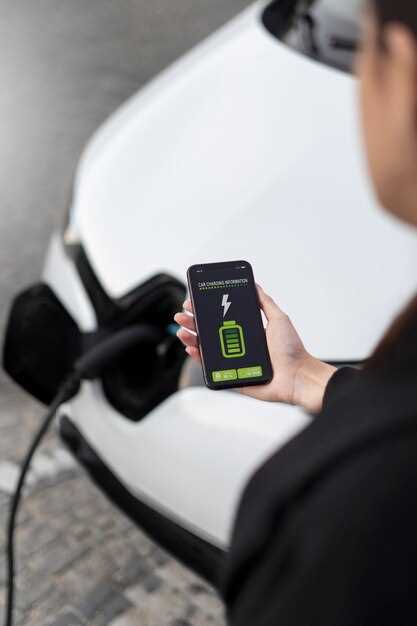
As more people transition to electric vehicles (EVs), the allure of lower fuel costs and reduced environmental impact often overshadows the hidden expenses associated with ownership. While the initial price of an EV may be offset by various incentives, it’s crucial to delve deeper into the total cost of ownership and the factors that can significantly affect your budget.
Initially, EV ownership appears economically viable, with lower maintenance costs and government incentives. However, potential owners must consider additional expenses that can arise, ranging from charging infrastructure and home installation to battery replacement and insurance. Understanding these hidden expenses is vital for anyone contemplating a shift to an electric vehicle.
Moreover, EV owners should be aware of the varying charging costs, especially if they rely on public charging stations. The pricing structures can be complex, and understanding your personal usage patterns can lead to unexpected savings or expenses. The goal is to paint a comprehensive picture of what it truly means to own an EV–both the benefits and the less obvious costs.
Evaluating Charging Infrastructure Costs for EV Owners

When considering electric vehicle (EV) ownership, one crucial aspect that often requires careful evaluation is the cost associated with charging infrastructure. For many potential EV owners, understanding these costs is vital for making informed decisions about their investment.
The primary consideration is the installation of a home charging station. While many EVs can be charged using standard household outlets, installing a Level 2 charger can significantly reduce charging time. The average cost for this installation ranges from $500 to $2,000, depending on the complexity of the installation and local electrical codes. Additionally, ongoing maintenance and potential upgrades to the home’s electrical system may contribute to the overall expenses.
Public charging stations are another essential factor in the charging infrastructure landscape. While some are free, most require a payment method, either through charging memberships or per-session fees. These costs can vary widely, making it crucial for EV owners to familiarize themselves with local charging rates. For those who frequently travel long distances, the availability and pricing of fast-charging stations along routes can also impact the total cost of EV ownership.
Another hidden expense can be related to charging at workplaces. Some companies offer free charging to employees, but others may not, and the costs can add up over time. Understanding your workplace’s policies on EV charging is key to incorporating these potential expenses into your budget as an EV owner.
Furthermore, utility rates play a significant role in the overall charging costs. Many electric companies offer time-of-use plans that can significantly reduce charging expenses if owners charge during off-peak hours. However, the fluctuating costs of electricity can complicate budget predictions and influence the overall expense of EV ownership.
In summary, evaluating the costs of charging infrastructure is an essential part of the electric vehicle ownership experience. From home installations to public charging fees and utility rates, these factors collectively shape the financial landscape for EV owners, requiring careful consideration and planning.
Calculating Maintenance and Repair Expenses for Electric Vehicles

When considering electric vehicle (EV) ownership, it is essential to analyze the potential maintenance and repair costs associated with these vehicles. Although electric cars generally require less maintenance than their gasoline counterparts due to fewer moving parts, certain expenditures still arise that owners must account for.
One significant area is the battery maintenance expense. Electric vehicle batteries are designed to last for many years, often up to 100,000 miles or more, but their performance can decline over time. Replacing a battery can be a considerable investment, ranging anywhere from $5,000 to $15,000, depending on the vehicle model. It’s crucial for potential owners to factor this long-term cost into their budget when evaluating ownership.
Tire replacement is another aspect to consider. While EVs tend to have lower overall wear due to regenerative braking, tires on electric cars may wear out faster due to their heavier weight and instant torque. Regular rotation and timely replacement can keep costs manageable but should be included in the overall maintenance calculations.
Additionally, while electric vehicles usually do not require oil changes, they do have other fluid maintenance needs. Coolant and brake fluid levels must be monitored and serviced periodically, which contributes to ongoing maintenance costs. Owners should also plan for brake pad replacements since EVs often utilize regenerative braking, which can reduce wear but may still require occasional replacements.
Ownership of an electric vehicle can lead to savings in some areas, but repair costs for unexpected issues should not be overlooked. While fewer mechanical parts may lead to lower repair frequencies, when issues do arise, they can sometimes be more expensive to fix. This includes specialized repairs for electric drive systems and electronic components, emphasizing the importance of choosing a mechanic experienced with EV technology.
In conclusion, while electric vehicles offer many benefits, including lower routine maintenance costs, potential owners must carefully calculate maintenance and repair expenses. By considering factors such as battery replacements, tire wear, fluid services, and specialized repairs, EV owners can prepare for the full scope of costs associated with ownership. Recognizing these expenses will aid in making an informed decision about transitioning to an electric vehicle.
Comparing Insurance Rates for Electric Cars vs. Traditional Vehicles
The cost of insuring electric vehicles (EVs) can vary significantly compared to traditional vehicles. Factors influencing these insurance rates include vehicle type, repair costs, and coverage options.
Repair Costs: Generally, EVs may have higher repair costs due to specialized parts and technology. Electric batteries can be expensive to replace, which may lead to higher insurance premiums. Insurance companies take these potential costs into account when calculating rates for EVs.
Safety Features: Many EVs come equipped with advanced safety features, which can reduce the likelihood of accidents. Such features may lead to lower insurance premiums, as insurers often provide discounts for vehicles with enhanced safety technologies.
Vehicle Value: The initial purchase price of an electric vehicle tends to be higher than that of comparable traditional vehicles. This increased value can affect insurance rates, as coverage amounts and potential payouts are higher for more expensive vehicles.
Driving Habits: EV owners might have different driving habits compared to traditional vehicle owners. For example, EVs are often driven in a more eco-conscious manner, which may correlate with lower accident rates. Insurers may offer competitive rates based on demographic data associated with EV users.
In summary, while the insurance costs associated with electric vehicles may initially seem higher due to factors like repair expense and vehicle value, potential savings from safety features and responsible driving habits can offset these costs. It’s crucial for prospective EV owners to compare quotes from different insurers for a comprehensive understanding of the financial implications of EV ownership.


